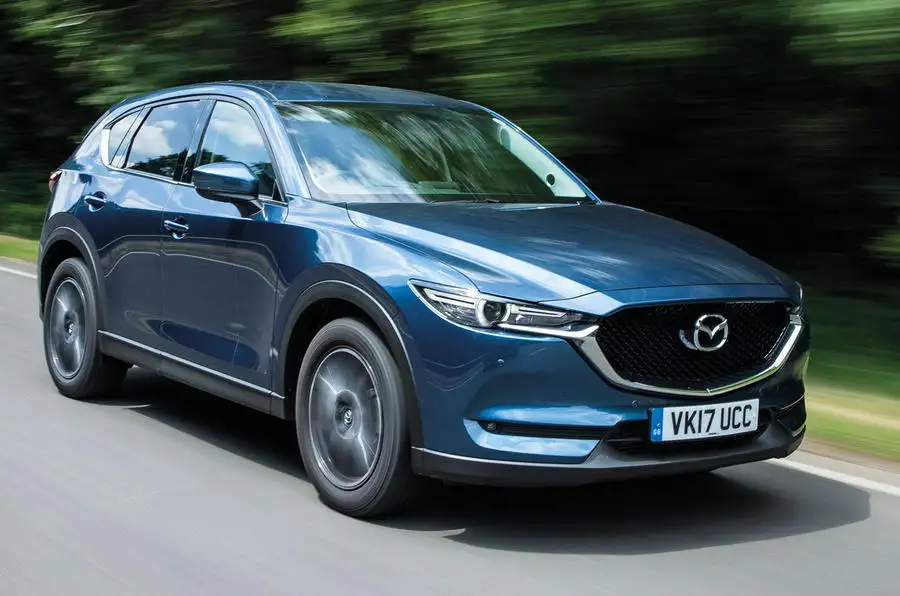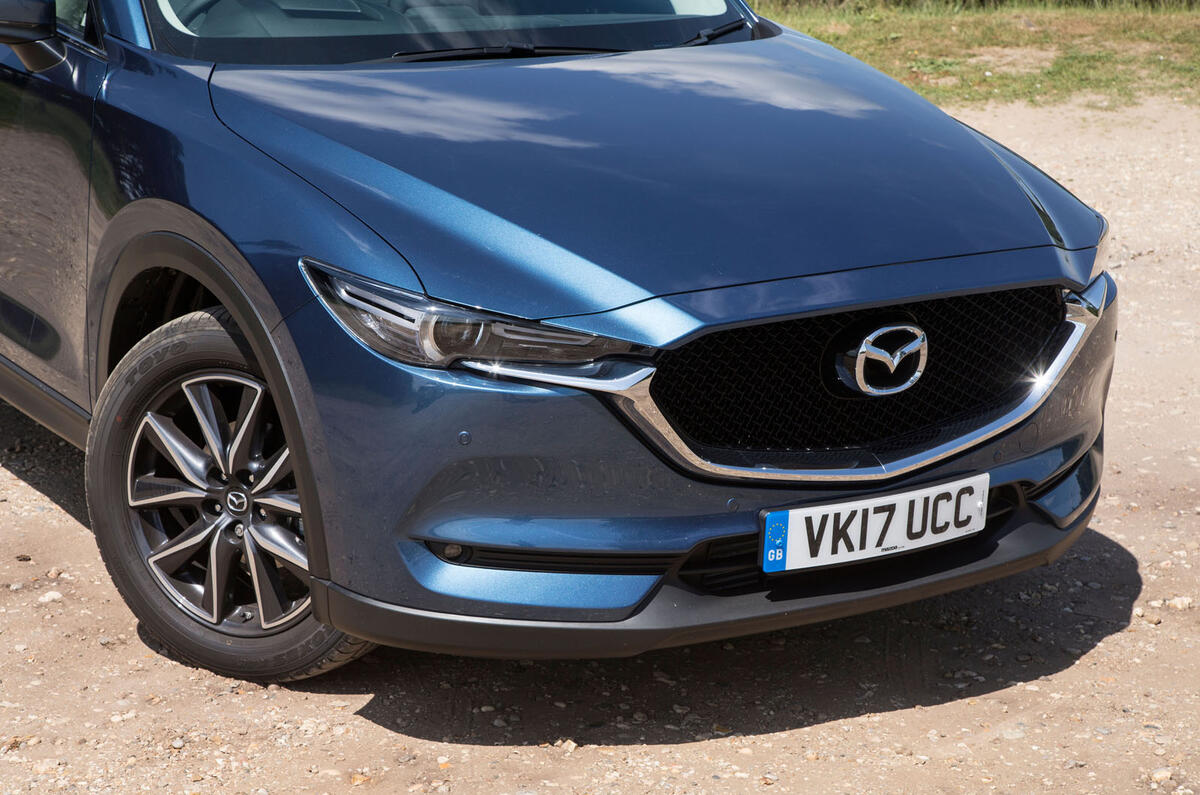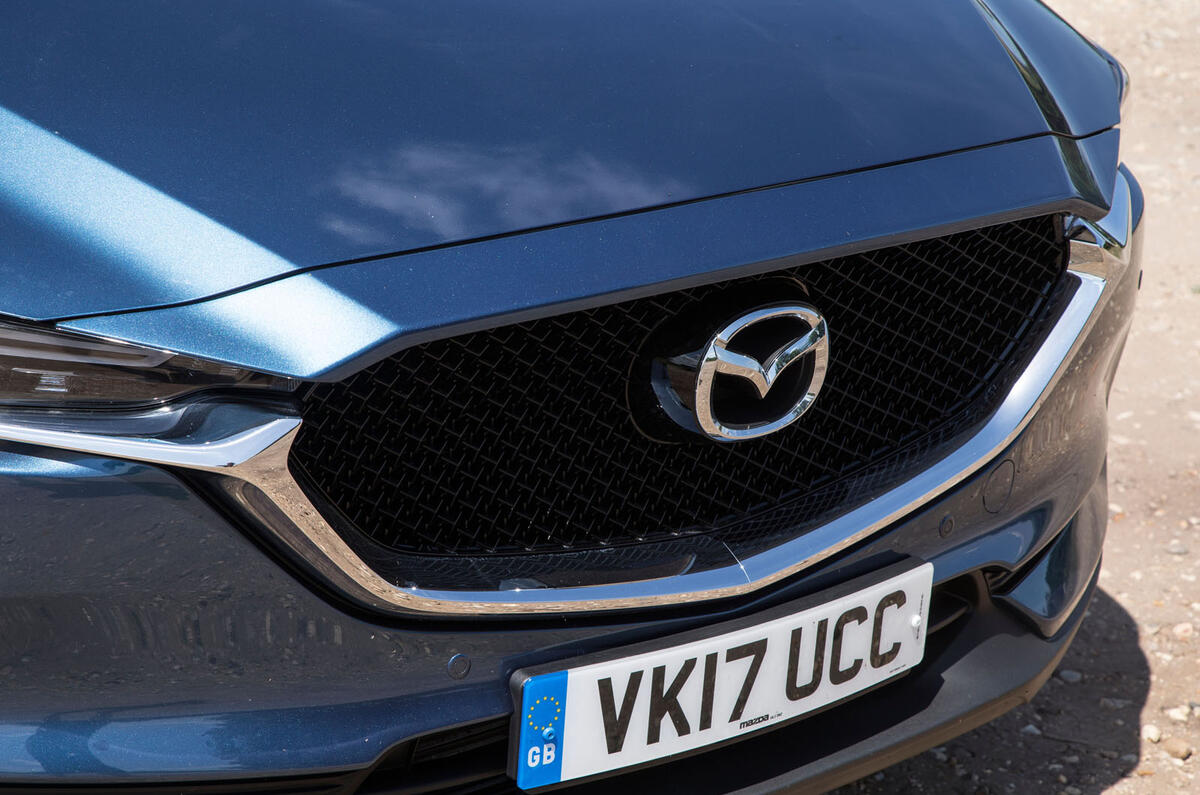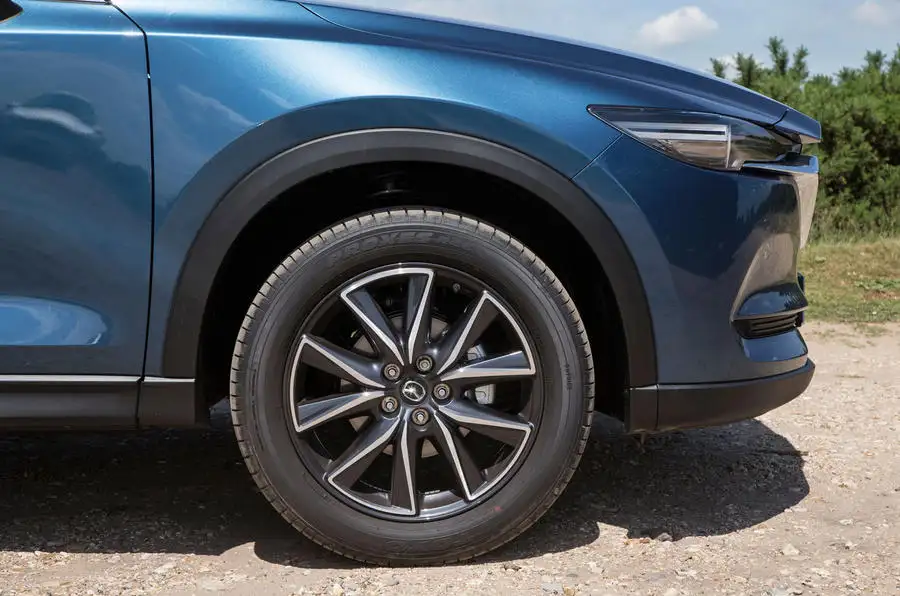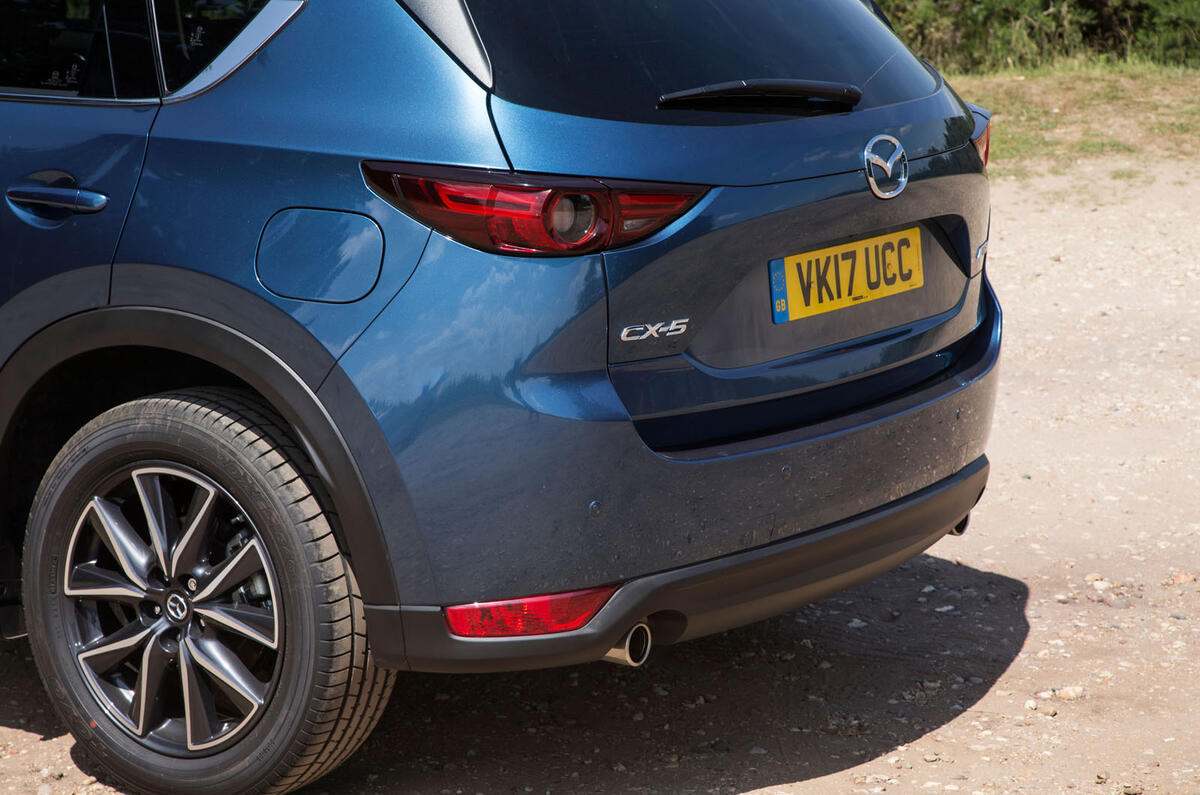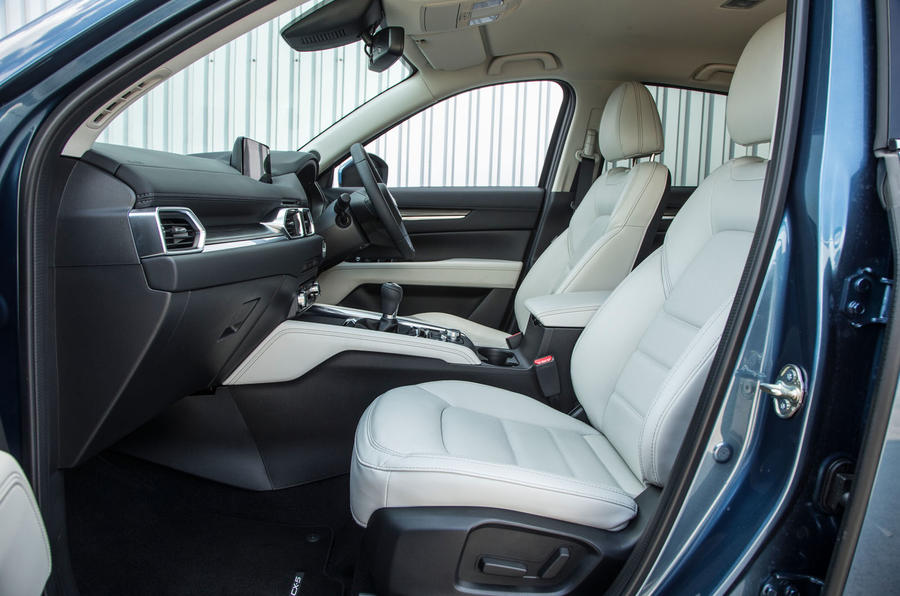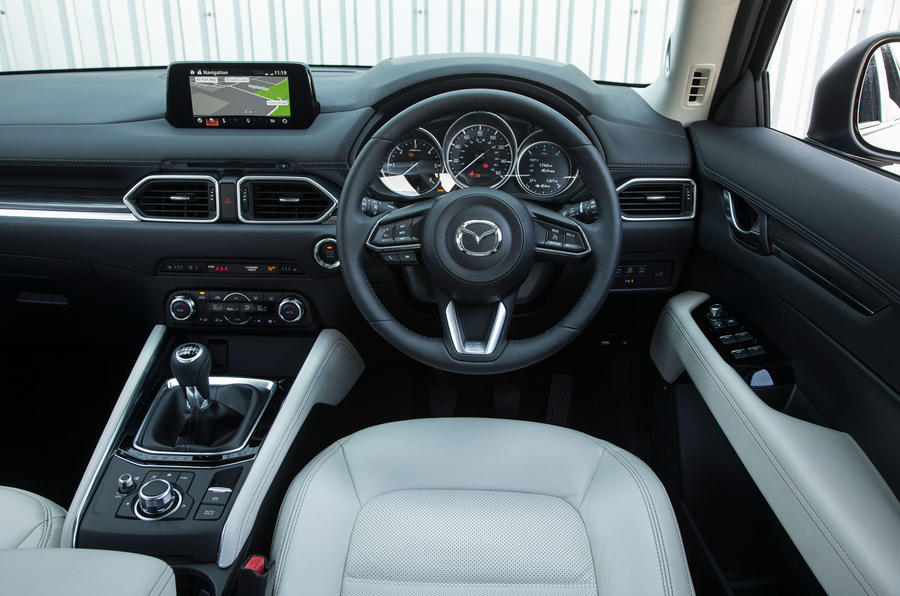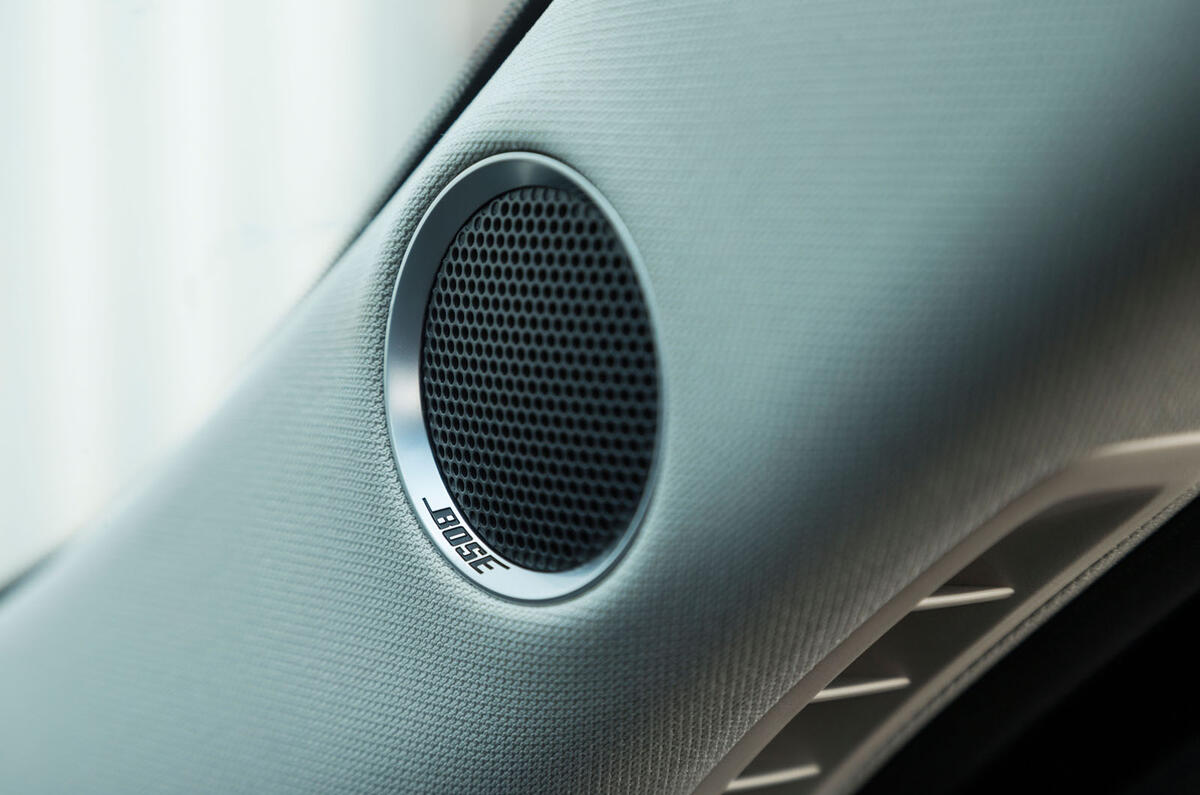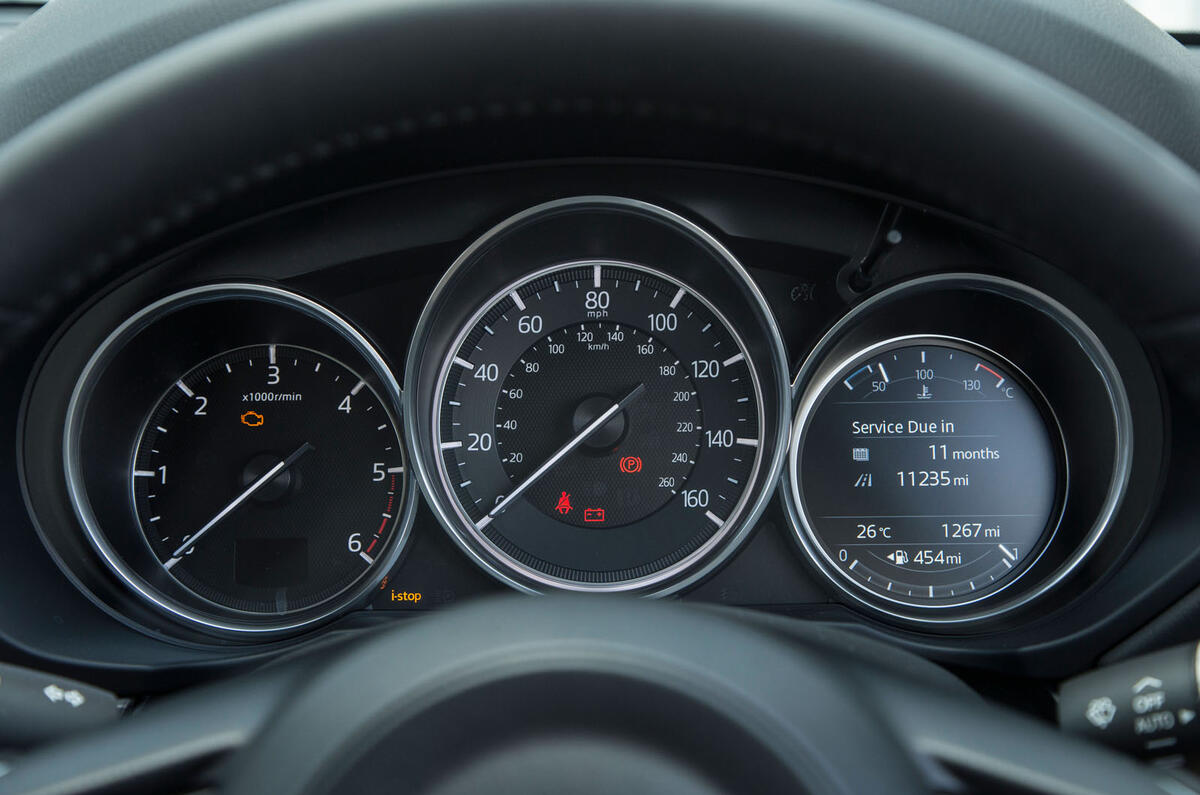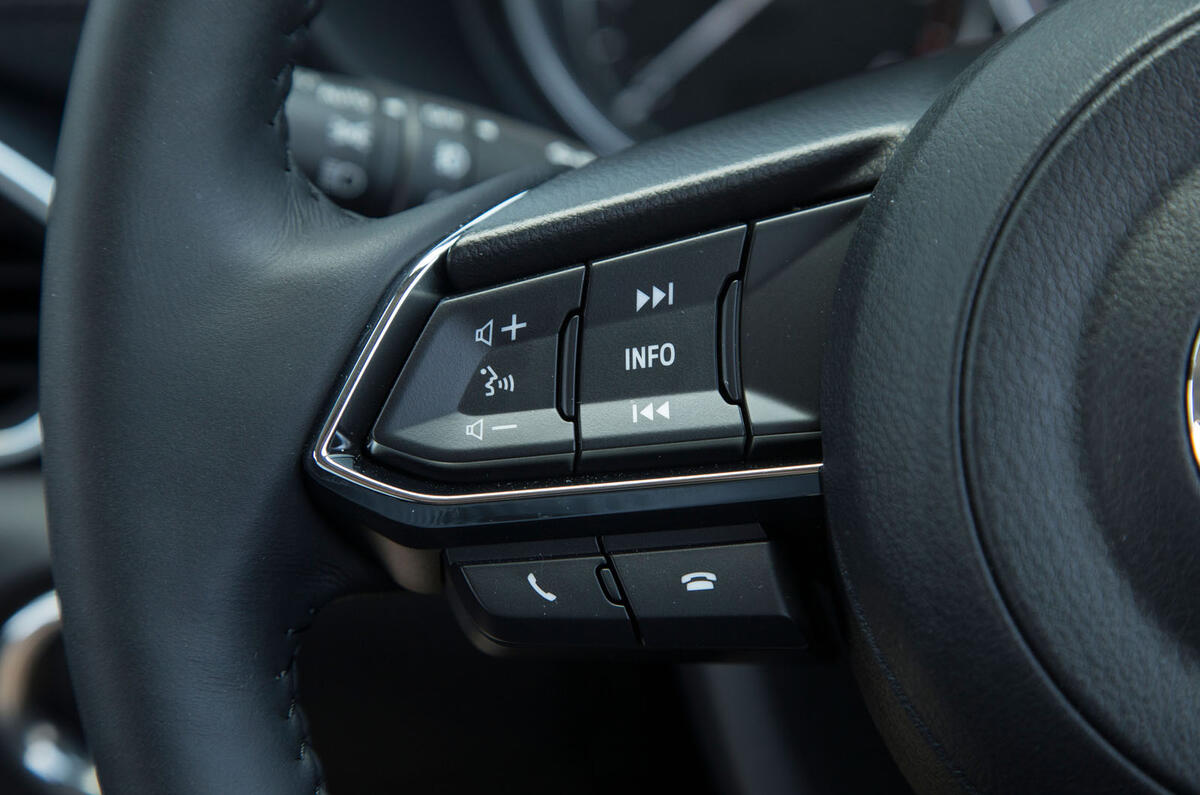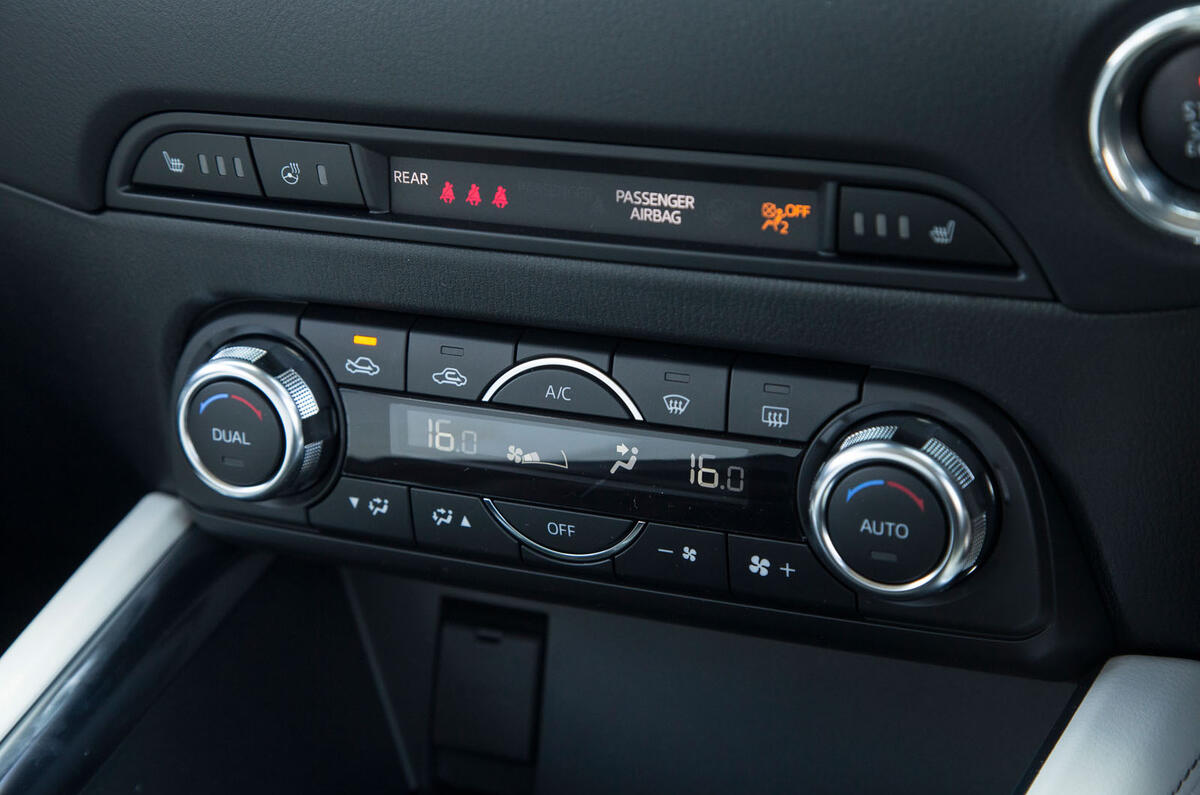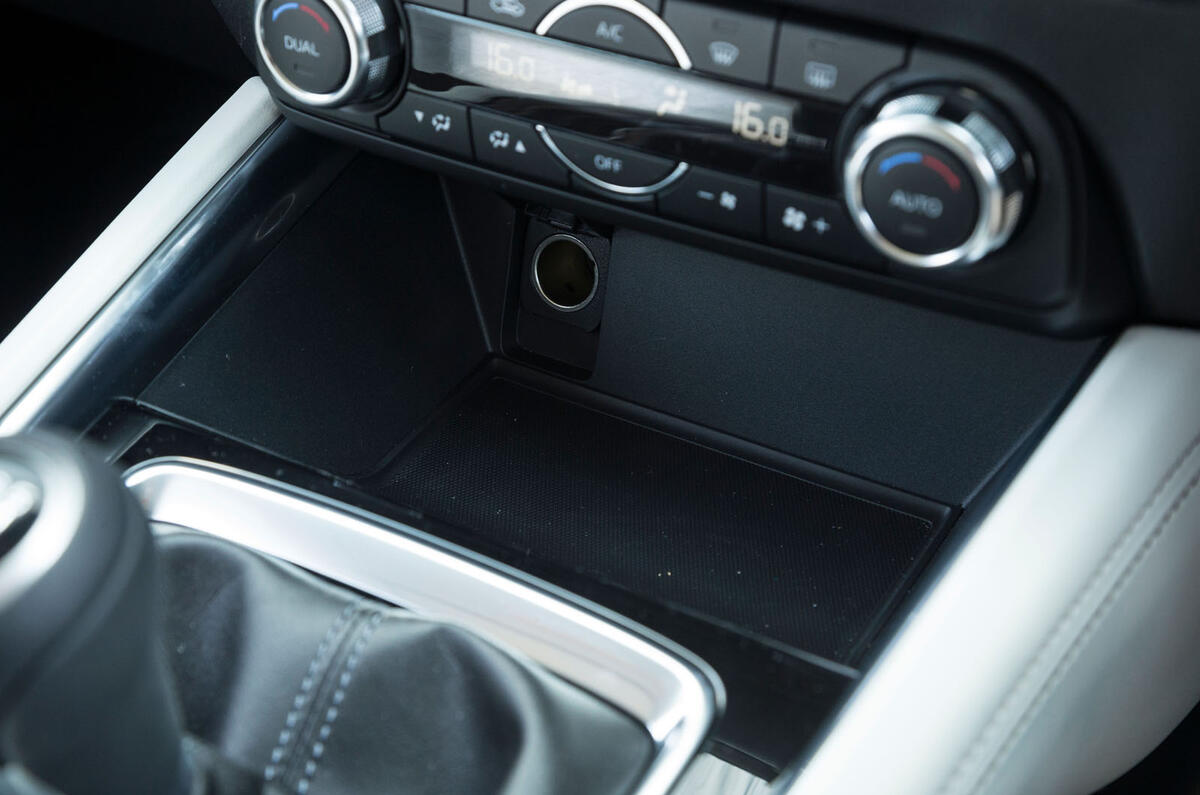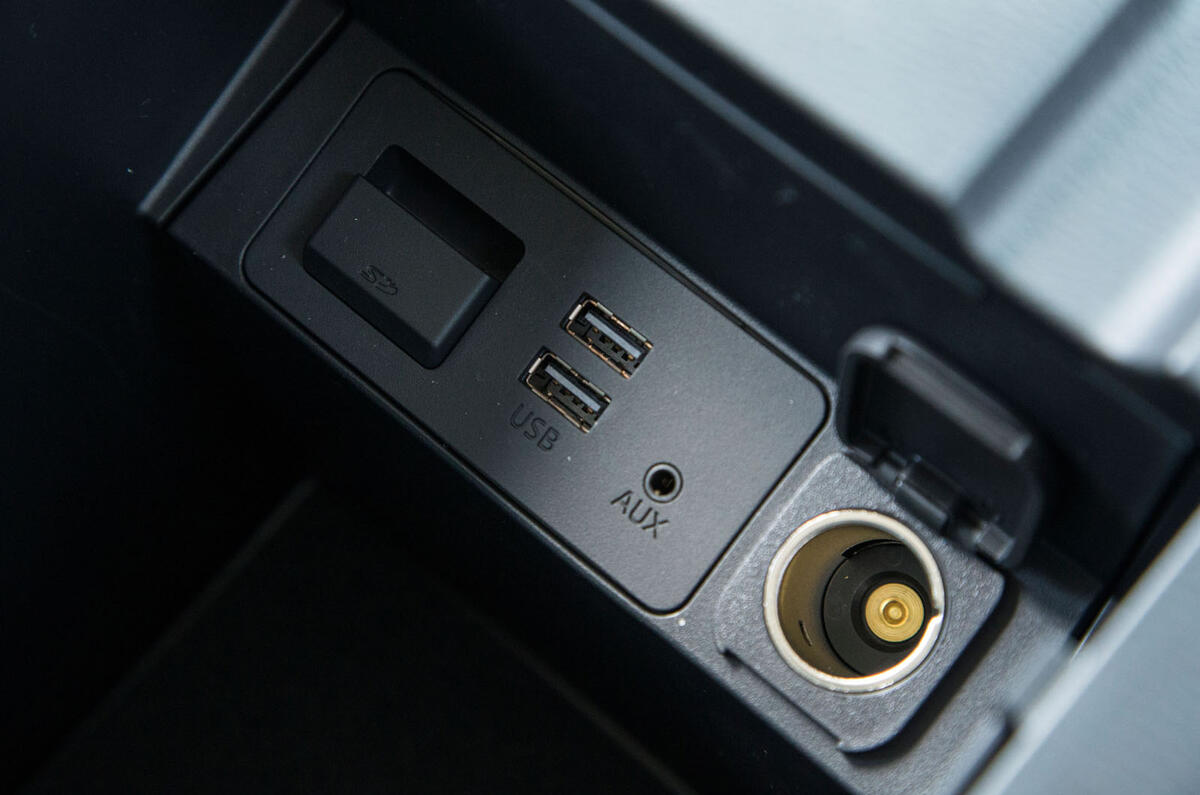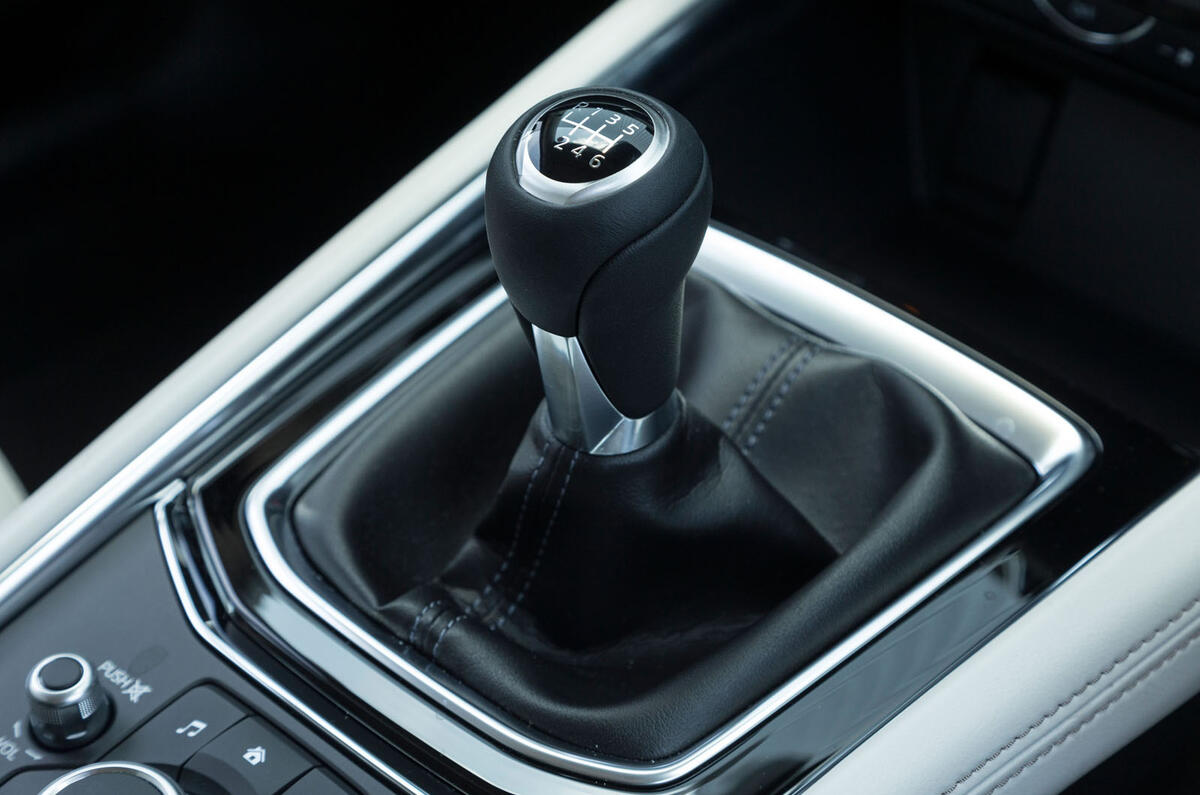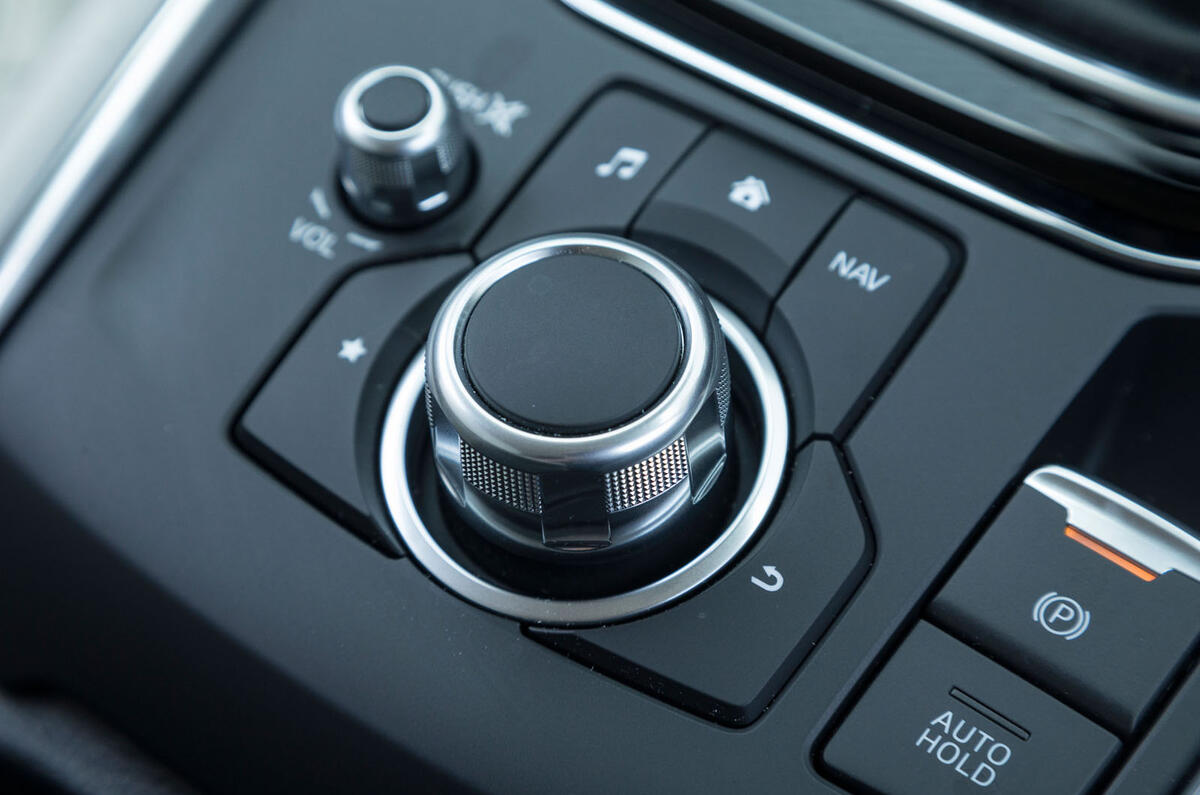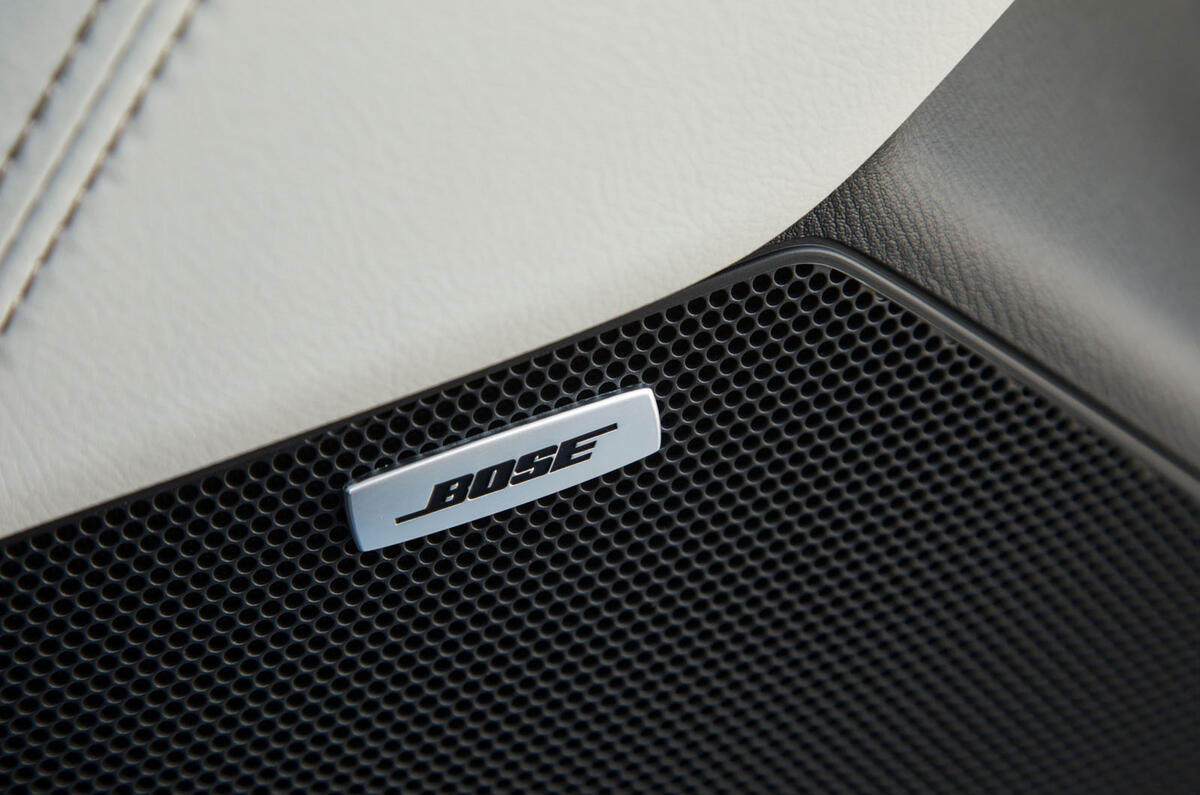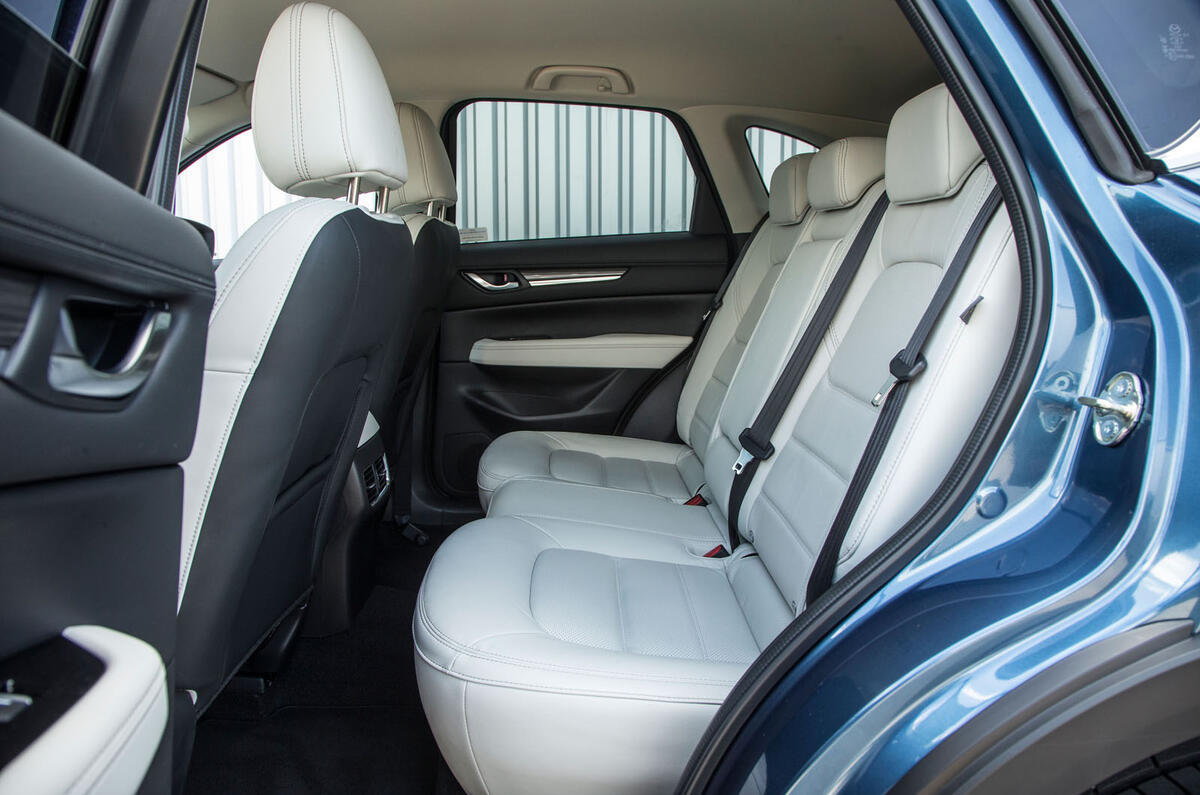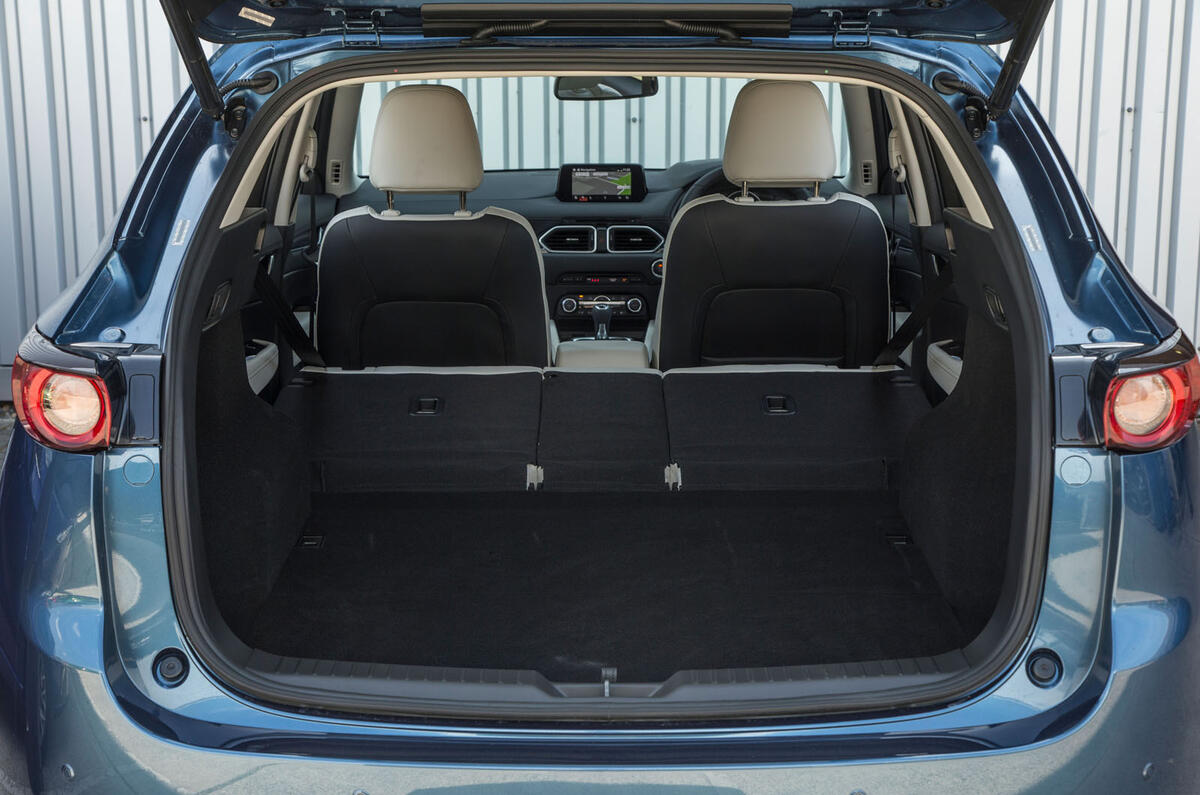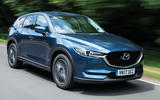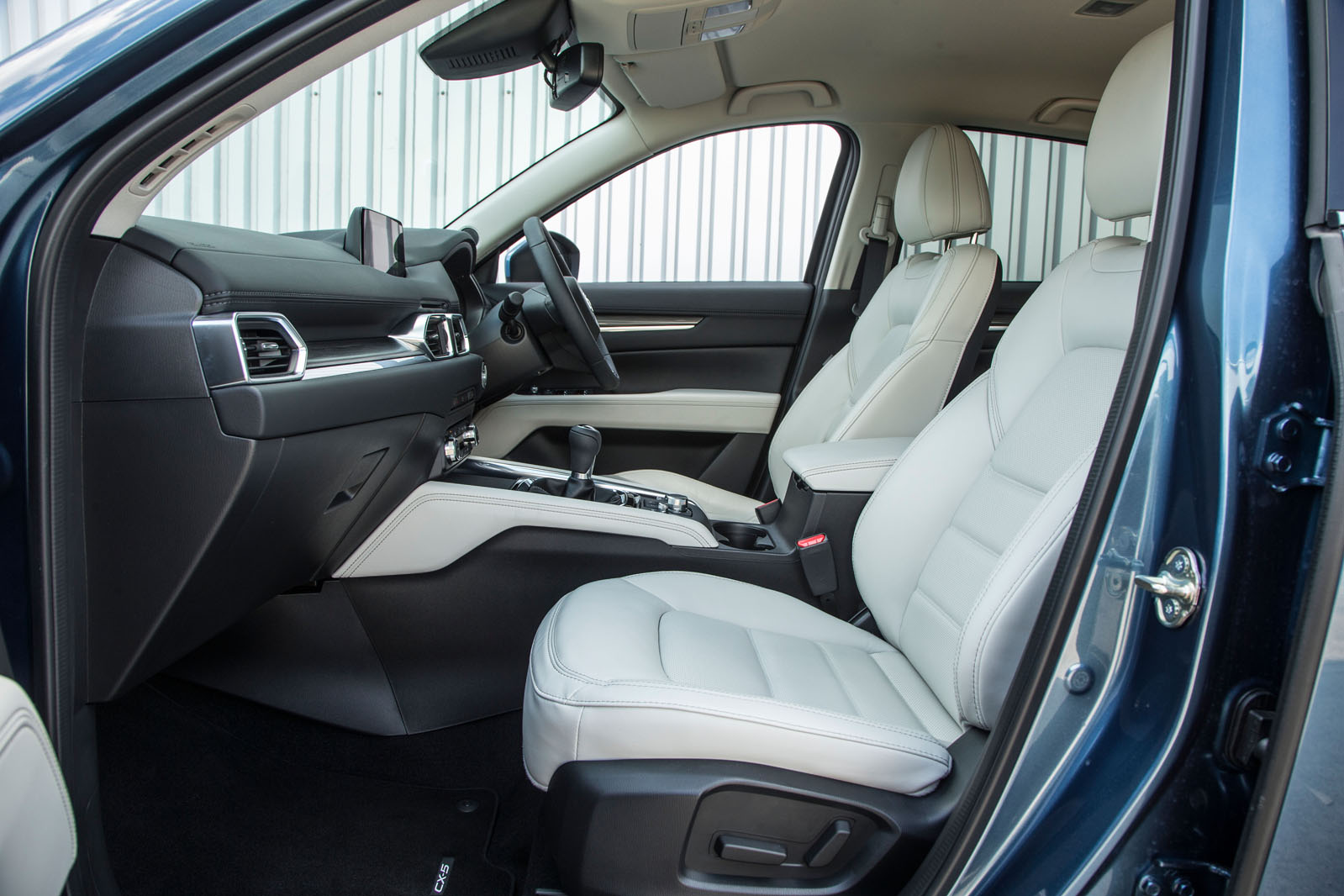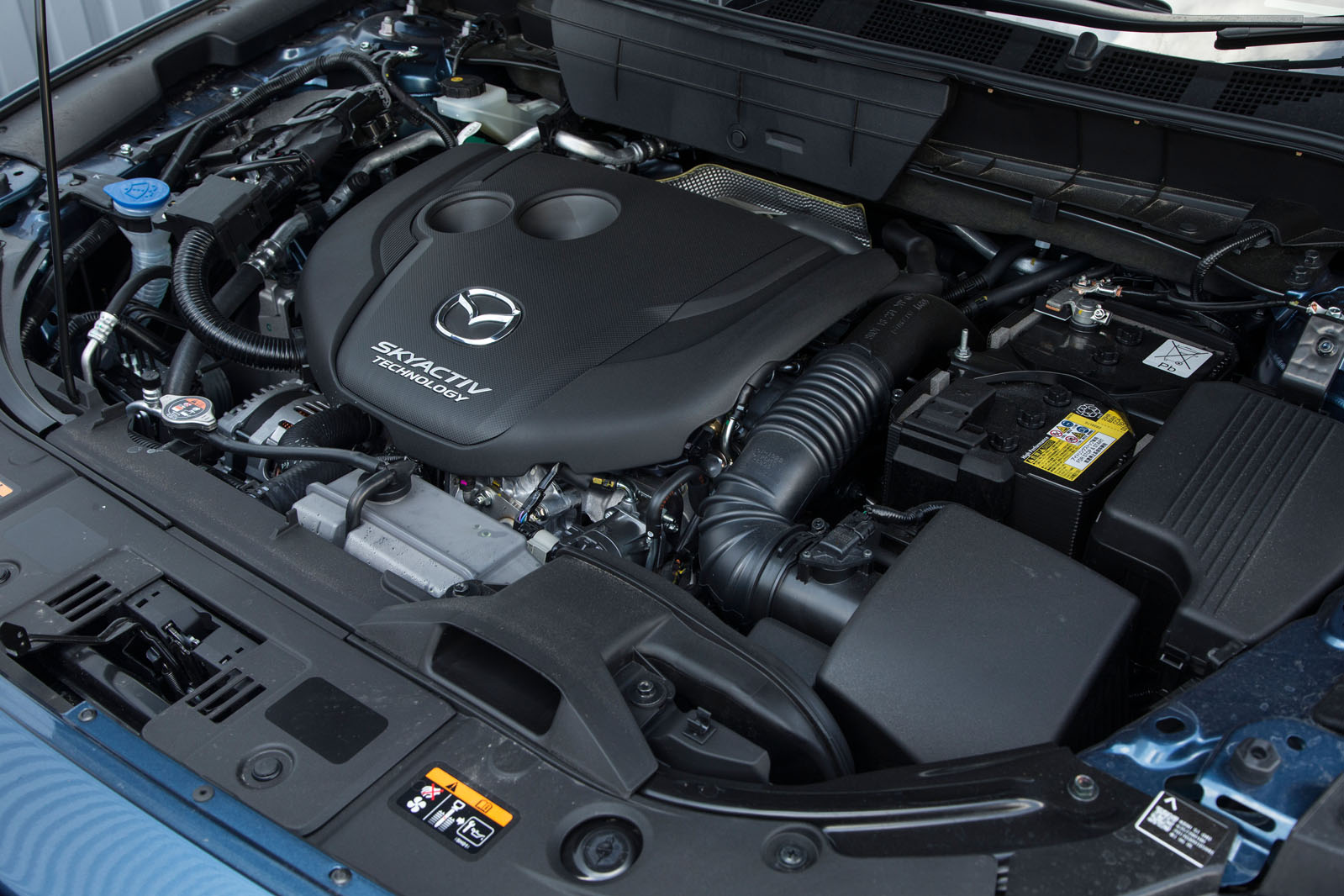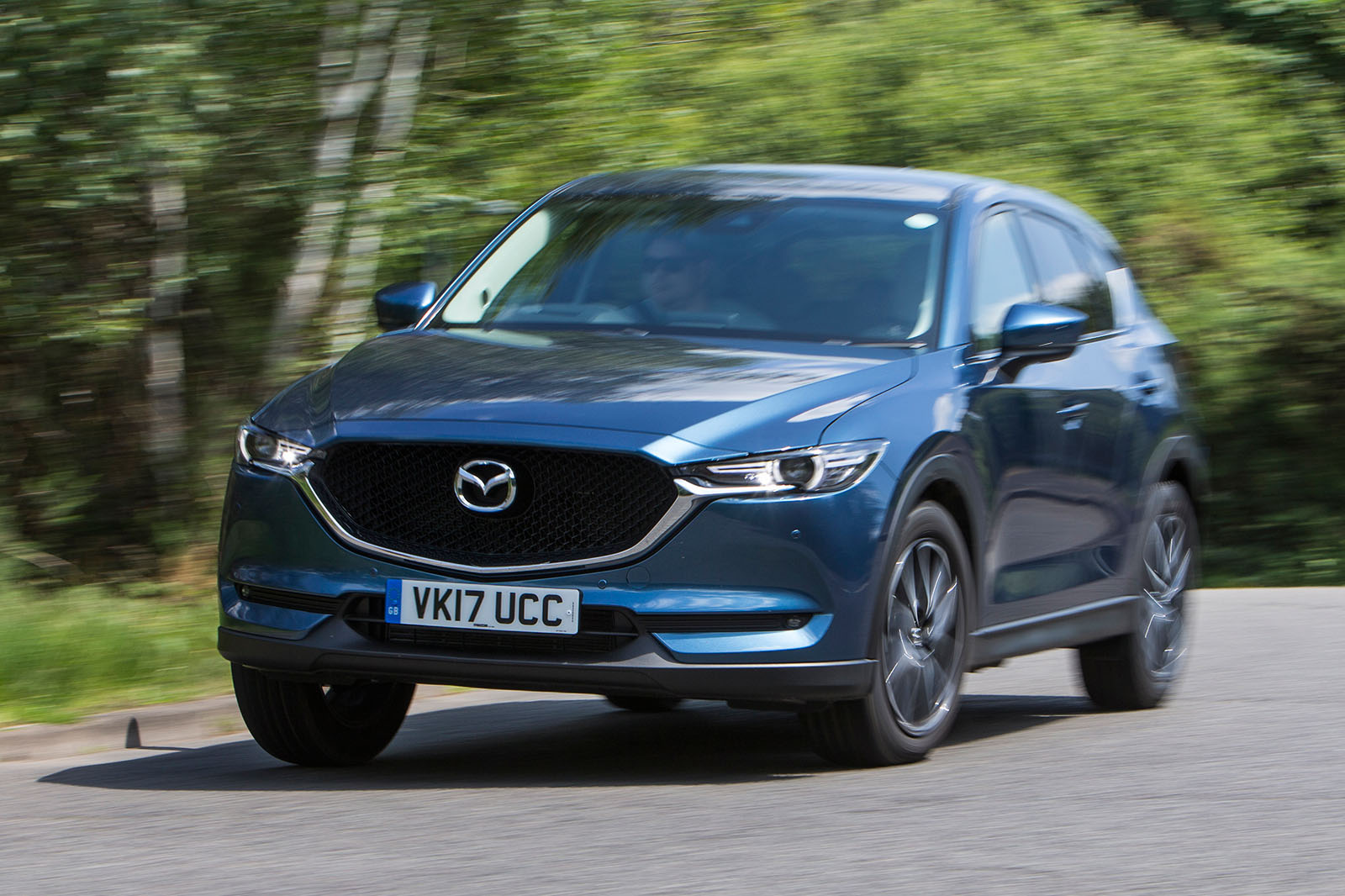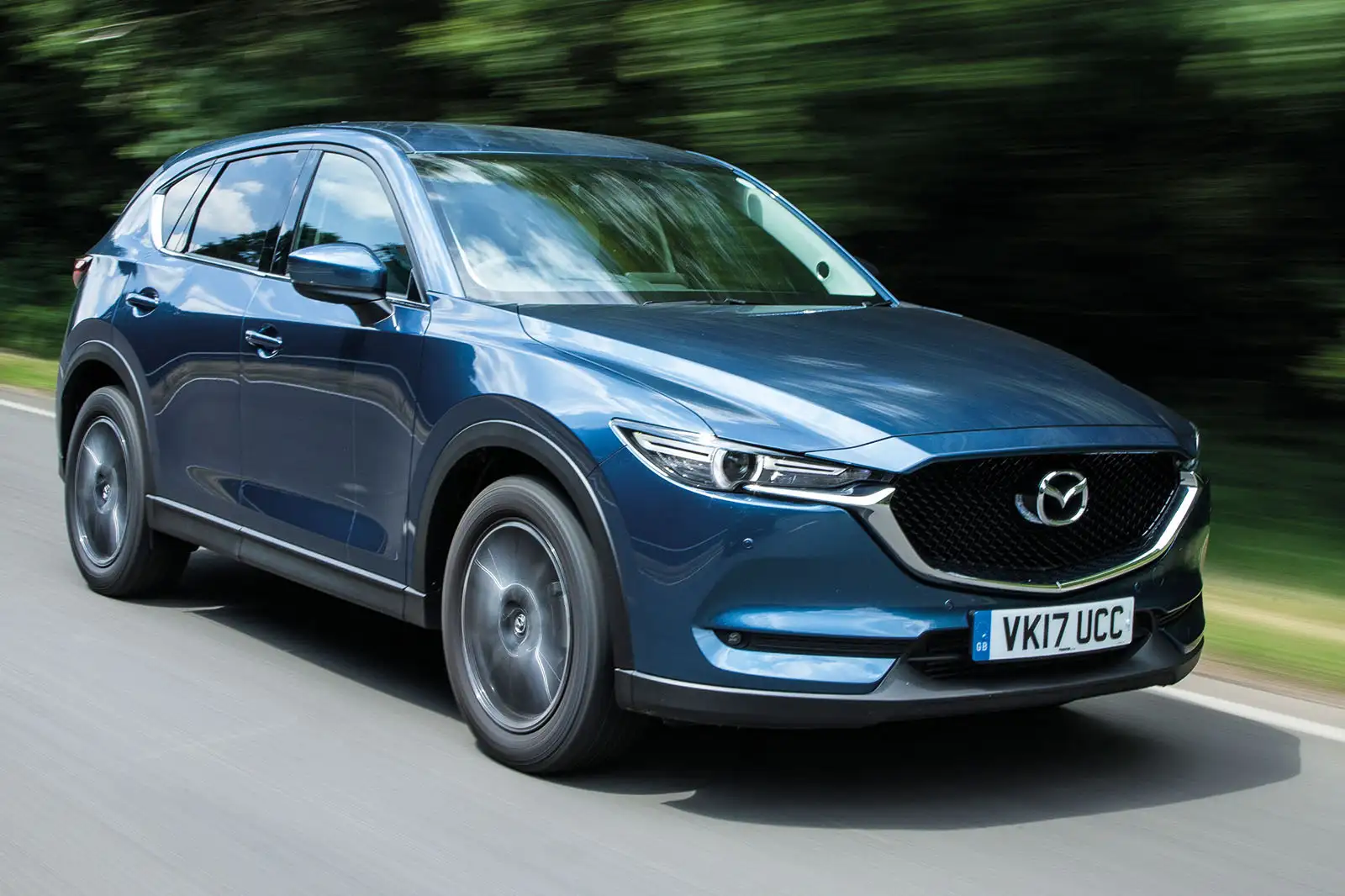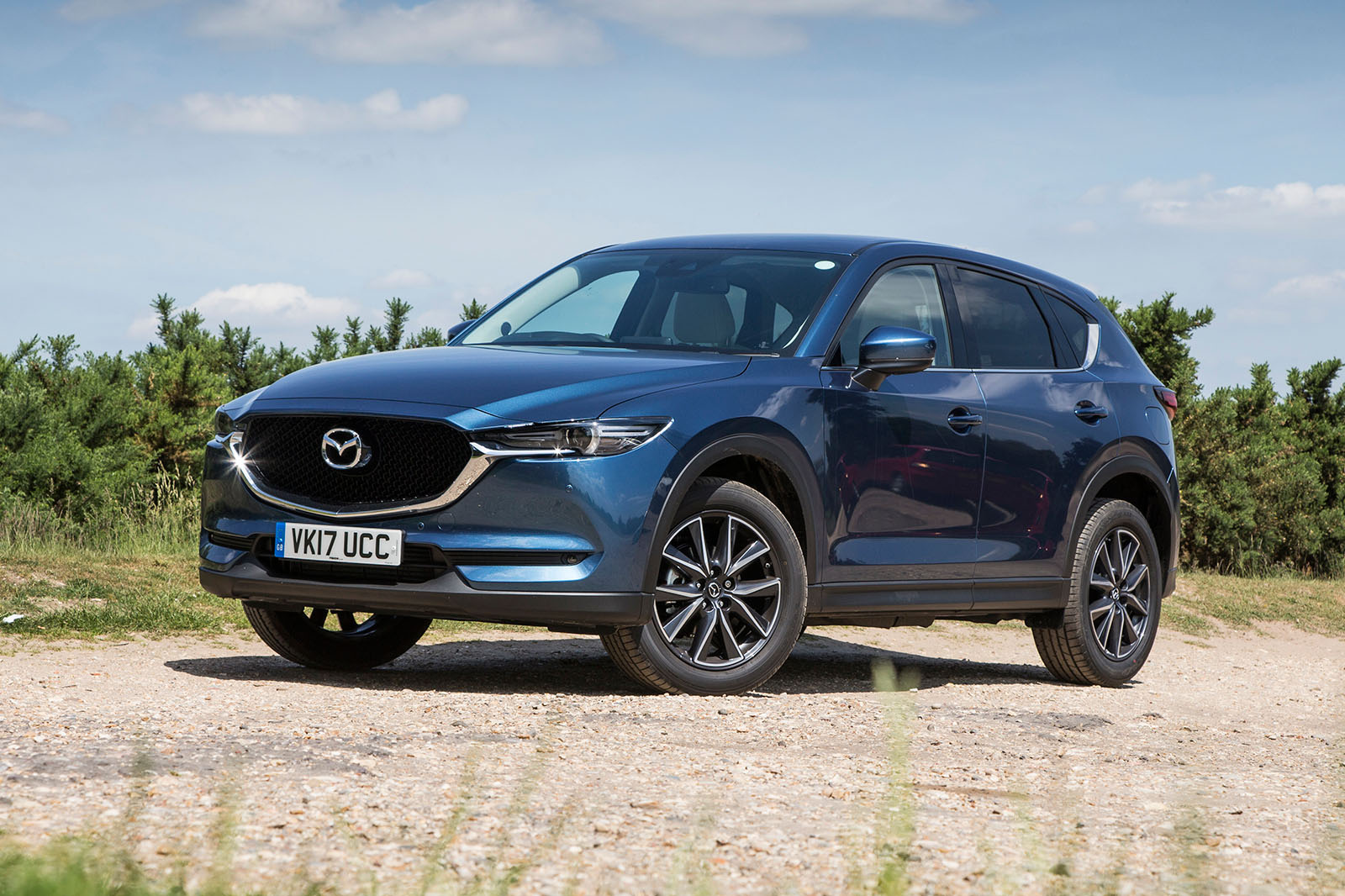Much like the engineering revisions, the interior refresh tends towards carefully considered adjustments rather than wholesale change.
Which isn’t to say that the aesthetic remains unaltered, just that the hard points – and therefore the car’s layout – are essentially the same.
Nevertheless, there are three telling modifications: firstly, the infotainment has been liberated from the dashboard and plonked on top (a far more modern setting); secondly, the centre console has been raised to better meet your left elbow; and thirdly, the trim materials have been revised. Modest changes, then, but they adroitly transform the CX-5’s cabin, especially from the driver’s seat.
Exhuming the touchscreen allows for a smaller, less invasive dashboard; one far nicer to touch than it was previously.
Arguably, the display itself is still slightly too small, but by better segregating it, Mazda has at least made interacting with it seem more instinctive. Although it is new to the CX-5, Mazda’s touch panel and the software that drives it is a familiar package. The 7.0in screen isn’t the most expansive offering around and occasionally makes the interface seem a little cluttered.
However, the menu system is logically presented, its home-screen crescent mirroring the motion of the dial controller, which is still positioned a little too far back on the centre console for most testers’ liking. There’s no reason to use this if you prefer the touchscreen, although it’s not difficult to miss the display’s tabs in some sub menus.
The satellite navigation is usable enough and its functionality is dramatically enhanced by a new version of Mazda’s head-up display. Now projected directly onto the windscreen, the full colour system includes turn-by-turn instructions, as well as speed and other vehicle status information, and is standard on the Sport Nav trim level. Also on the equipment list is a serviceable 10-speaker Bose stereo system and a reversing camera.
The raising of the gearlever by 40mm, a byproduct of the console’s elevation, which also affords a better proportioned storage bin.
The real advantage, though, is the feeling – borrowed from myriad premium rivals – of being better sunk into tall surroundings.
The CX-5 can afford to make this impression without seeming restrictive because it remains at the larger end of the family crossover scale, a virtue likely to be appreciated by those sitting in the back.
With a wheelbase marginally longer than either a Ford Kuga’s or a Volkswagen Tiguan’s, the CX-5 offers rear-seat accommodation that’s certainly adult-friendly in both leg and head room.
Its usability has been augmented by the introduction of a two-step reclining mechanism – a first for Mazda – which allows the seatback to be canted aft to an angle of 28deg.
Most buyers will be more interested in the boot space than ways of impinging on it. Happily, the CX-5 remains a sturdy prospect here, too, with 506 litres available to the model’s beltline.
The Sport Nav model on test has a powered bootlid, although the 40/20/40 bench still flops forward manually, revealing a pleasingly flat boot floor and a longer load space than was delivered by the Tiguan that we drove.



